Let's learn how to make tomato paste this summer! It is not hard to make it at home as long as you have good tomatoes and enough time. Either sun-dried or baked in the oven, homemade tomato paste is way better than the store-bought ones.
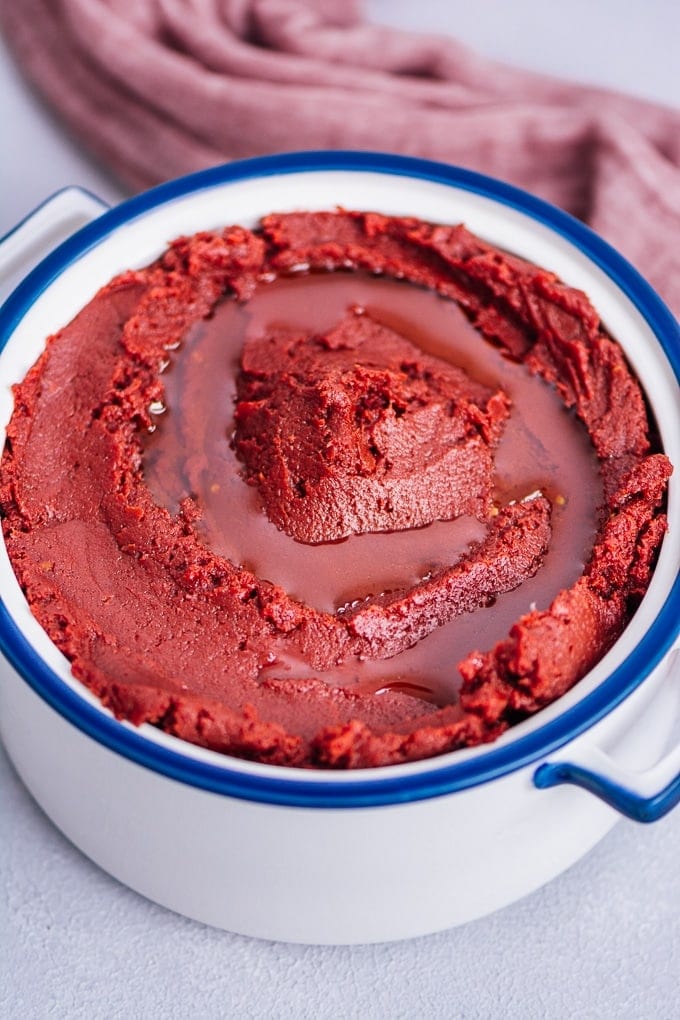
Tomato paste aka domates salcasi is a staple in Turkish dishes. We use it in several recipes from soups like Turkish tomato soup to pasta dishes like creamy tomato sauce and sides like bulgur pilaf. It gives a nice tangy flavor, which takes any dish to a whole new level.
Jump to:
What Is Tomato Paste?
Tomato paste is a concentrated tomato sauce. Tomatoes are pureed, cooked for a long time until it reduces by almost half. Tomato skin and seeds are removed in an easy process. And then this sauce is dried under the sun or baked in the oven until it reaches the desired thickness.
Thinking about the whole process above, we can say tomato paste goes beyond a regular tomato sauce indeed. For one thing, it is super thick. Sometimes you even need to thin it with a little water, depending on the dish you are making with it. Also, it has a much deeper taste than a tomato sauce.
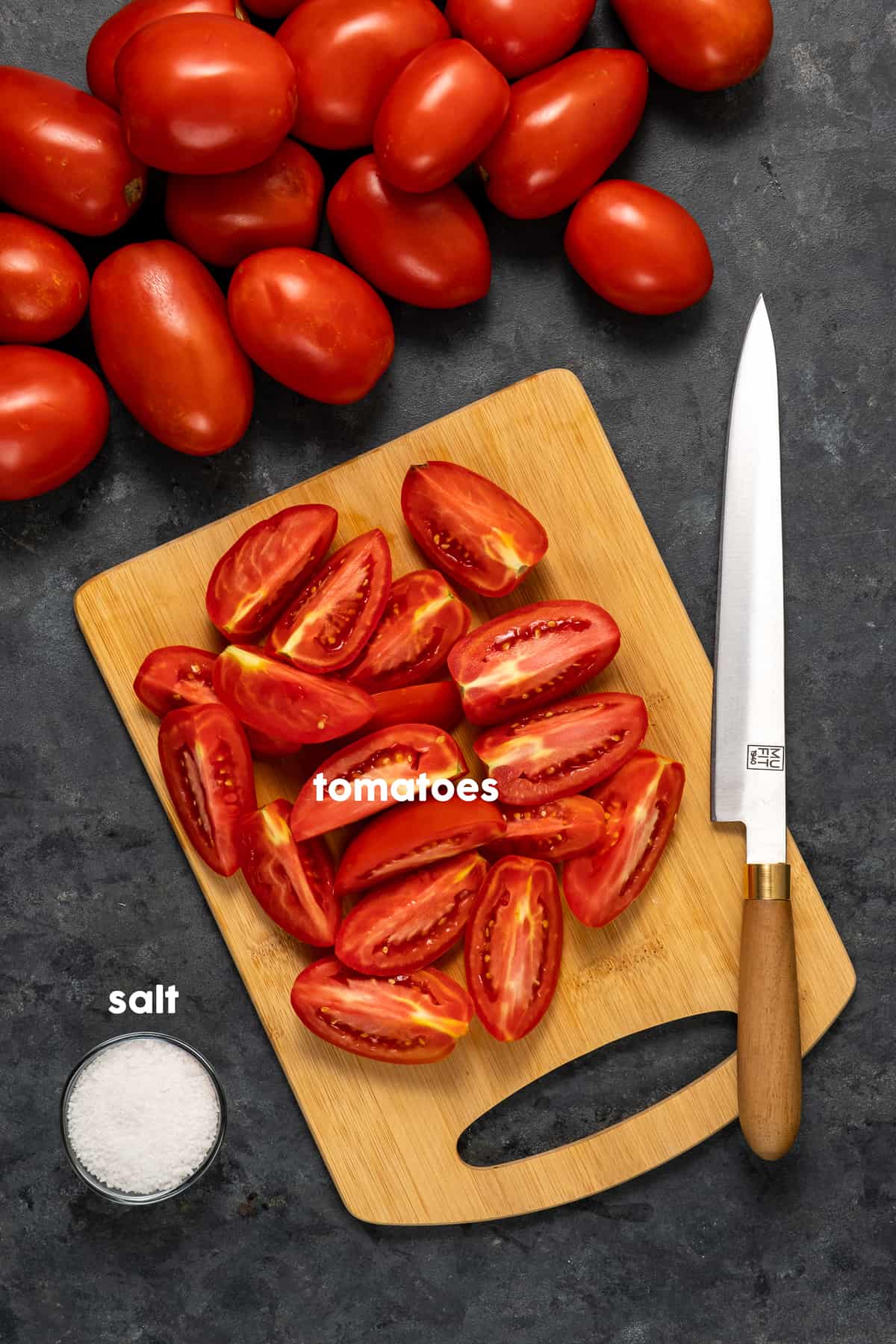
Ingredients
We need two basic ingredients when making tomato paste from scratch.
Tomatoes: Roma or plum tomatoes are the best because they are meaty and have fewer seeds. You end up with a good amount of paste. On the other hand, if you want to use fancy looking heirloom tomatoes, you end up with less tomato paste because they are not as meaty. And they require a longer cooking time so that their juice evaporates. Also, the color would not be as red when you use heirloom tomatoes. That being said, the taste would be equally tasty. So you can make tomato paste with any type of tomatoes but be aware of the facts above.
Salt: When making tomato paste, we use salt mainly as a preservative, rather than taste. So the type of salt really matters. Kosher salt and sea salt are the best options but make sure they are pure and don’t contain any additives. Just like when brining green olives, NEVER use table salt in your homemade tomato paste. Because it contains additives, table salt won’t act as a preservative.
How To Make
This is an easy tomato paste recipe with four steps:
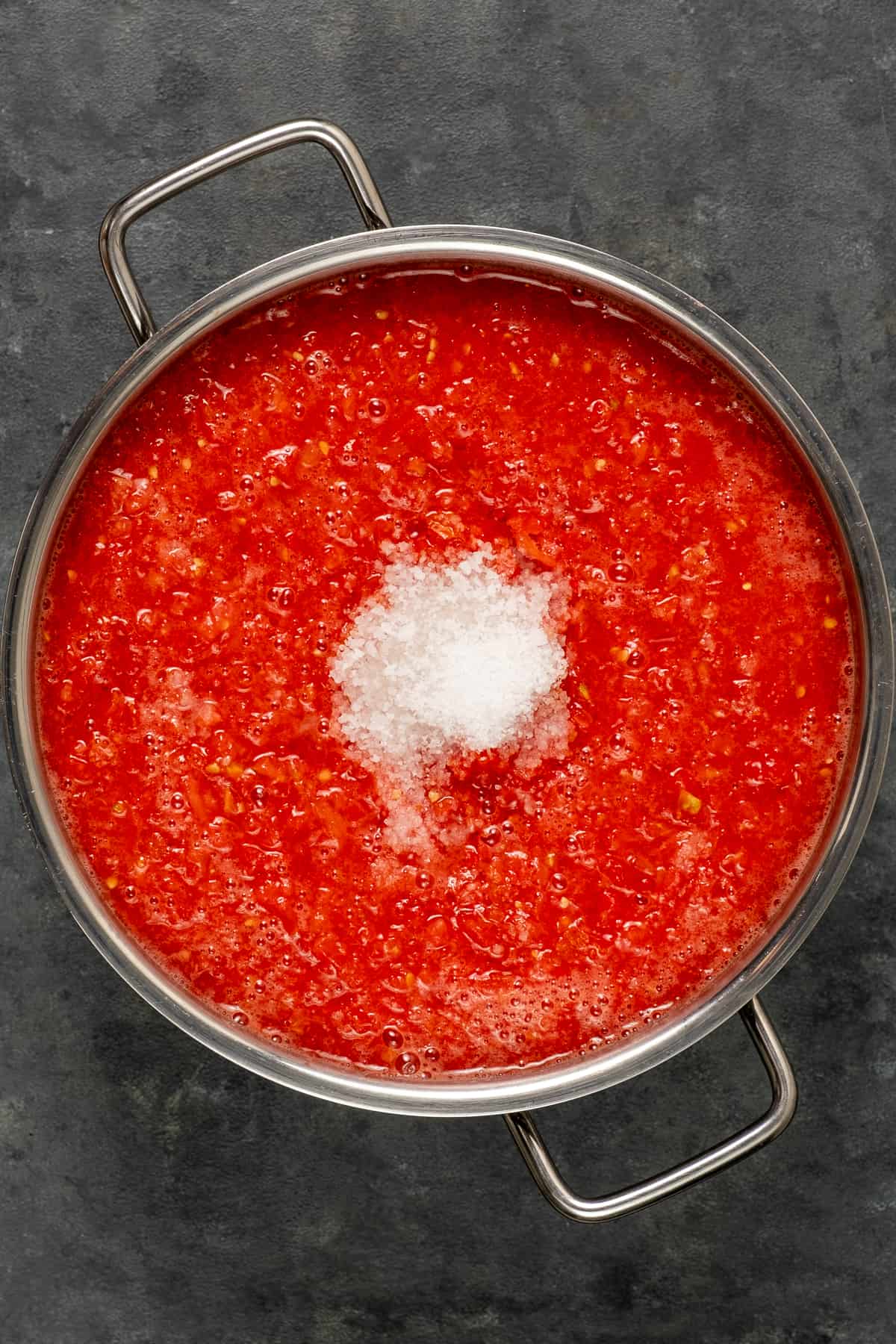
First, prepare the tomatoes. The only thing you need to do is to cut them into halves or quarters, removing the stems for sure. Put them in a food processor and puree them in batches. Then pour the puree into a large pot and sprinkle kosher salt over it.

Second, cook it over the stove. Heat it over medium high heat uncovered until the tomatoes release juice and start to boil. Keep boiling for about 30 minutes. This will help the excessive water evaporate. Meanwhile you will see foams on the top, remove them using a spoon. Then, reduce the heat to medium low and let the puree simmer until it has a consistency, for about 40 minutes. Let it cool.
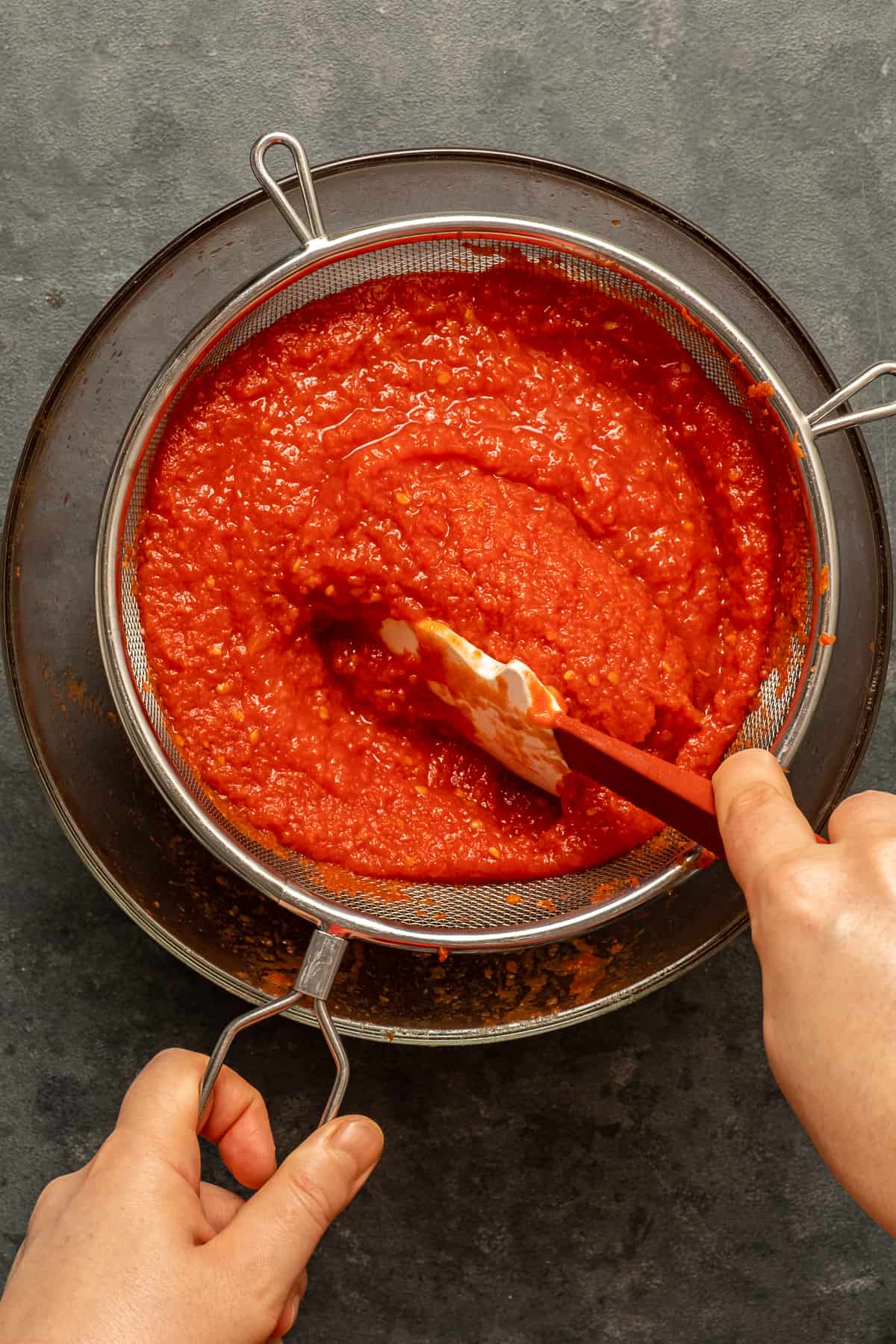
Third, remove the skin and seeds using a strainer. To do this, put a strainer over a large bowl. Pour the tomato sauce into the strainer. Press down the sauce using a spoon until only the seeds and the skin remains in the strainer. Pour the sauce back into the pot.
Next, put the pot back over medium heat and let it simmer until it gets thick, for 40-50 minutes.
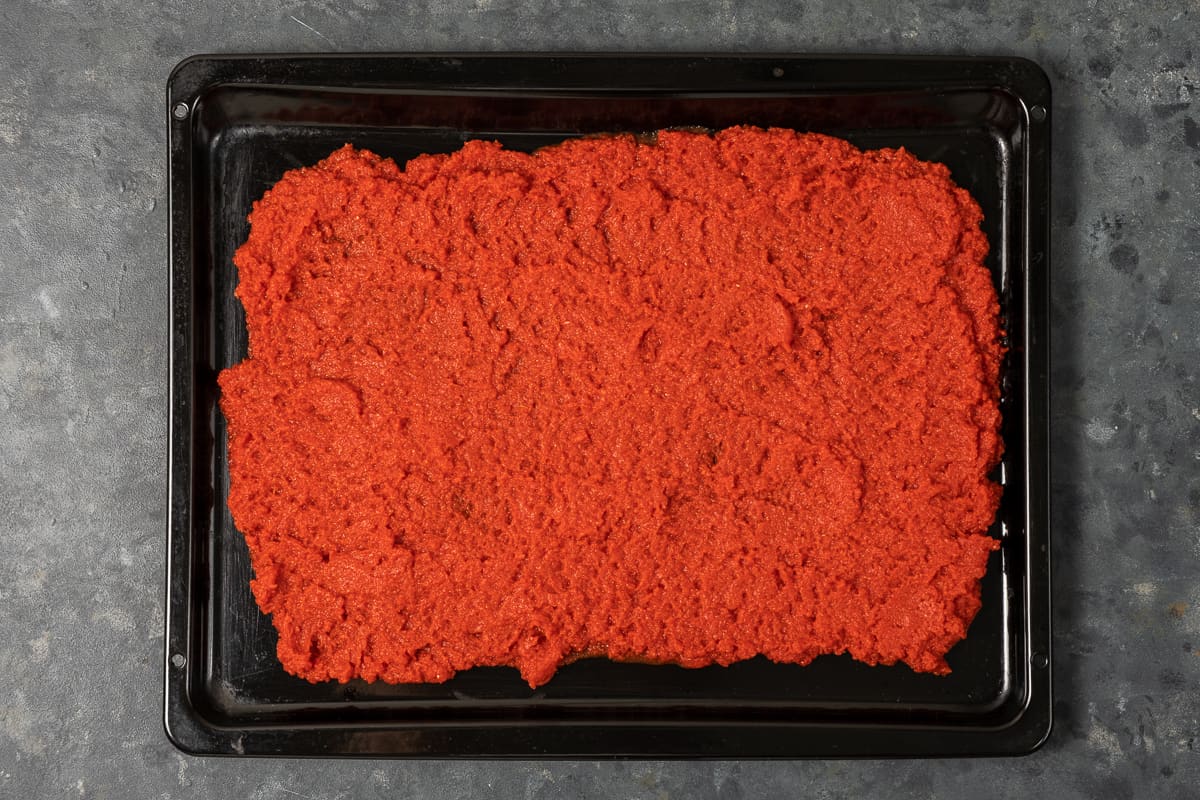
Finally, dry the sauce under the sun: For this, pour the sauce in one or two baking sheets in a thin layer. Wait it under the sun for 3-4 days depending on the temperature outside, until it gets really thick. After this duration, you can put the tomato paste into jars.
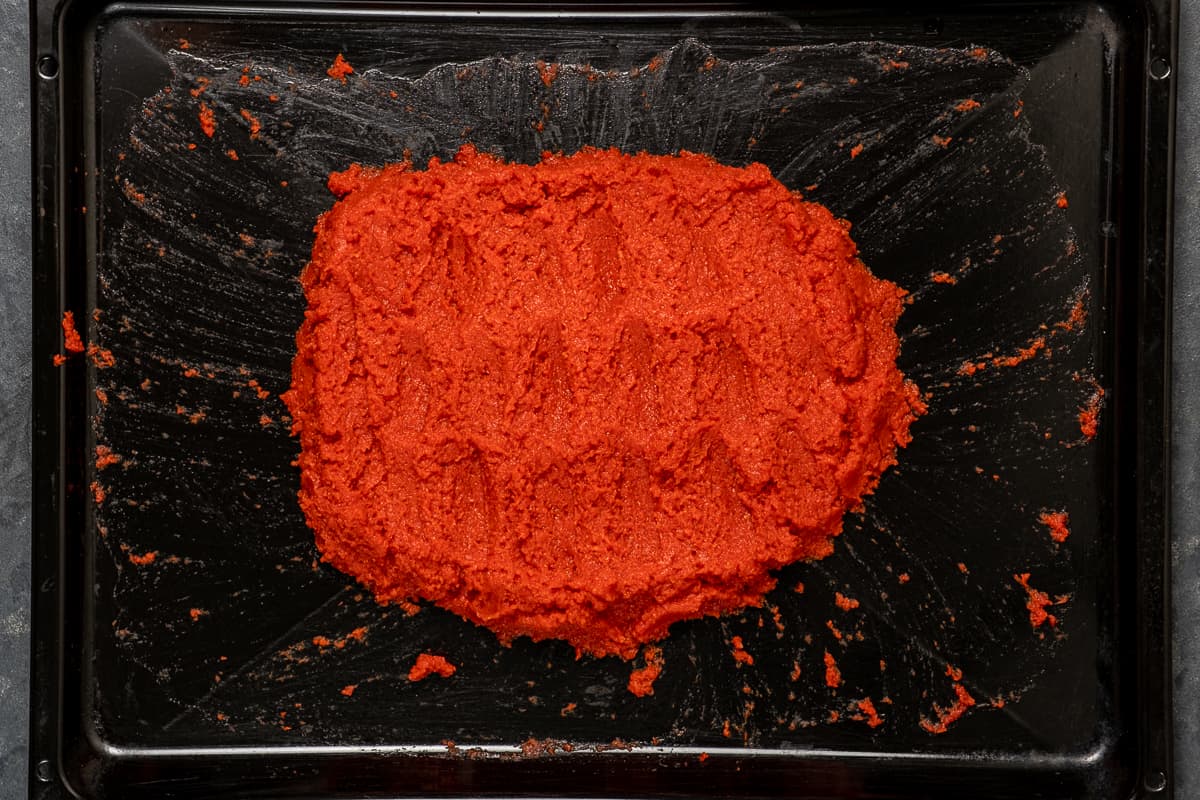
Pro Tip: Take the tomato sauce inside at nights to prevent any moisture.
Alternative Methods To Sun-Drying
No enough sun in your area or no place in your house for sun-drying? Don’t worry! After straining the cooked tomato sauce/puree, there are two alternative methods you can use:
Method 1: Continue cooking the sauce over the stove: After straining the sauce, pour it back in the pot and keep cooking over low heat until it reduces by more than half and gets thick. This might take several hours. Keep stirring it once in a while.
Method 2: Bake it in the oven: After straining the sauce, pour it back in the pot and let it simmer over low heat until thick, for 40-50 minutes. Preheat the oven to 200F/90C and turn on the fan. Pour the sauce in a large baking sheet and bake for 30 minutes. Remove it from the oven, give it a good stir, spread it evenly and put it back in the oven. Bake for 3 hours repeating the same steps after every 30 minutes. You will end up with a thick paste.
After the drying methods above, let your tomato paste cool completely and then share into jars.
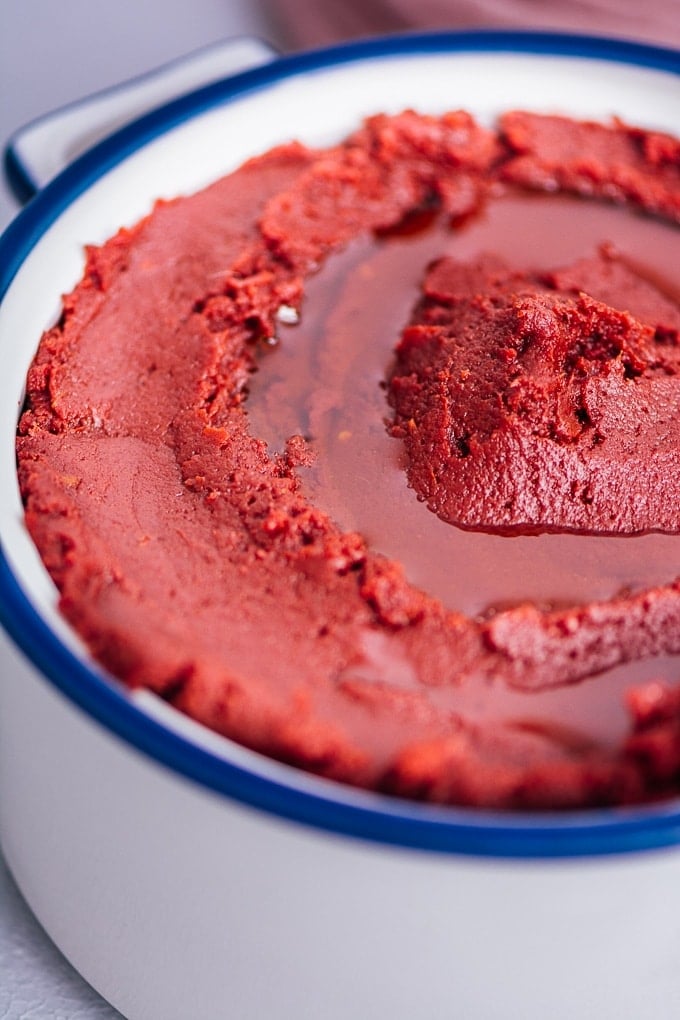
Storage
Transfer your homemade tomato paste into clean jars using a spoon, pressing it down well each time you put a spoon. There should be no air pockets left.
Flatten the surface and pour olive oil on it. The oil should cover it completely. This will prevent the paste from getting exposed to air.
Tighten the lid of jar. Store it either in the refrigerator or in your pantry, away from sunlight.
Pro Tip: Always use a clean spoon to scoop out some paste. The spoon shouldn’t be wet. Otherwise, this will cause mold on the surface of the paste.
Usage
In Soups and Stews: Tomato paste is a perfect addition to winter soups like tomato rice soup, and stews like Turkish white bean stew. You feel the flavor of summer when enjoying your meal in a freezing weather.
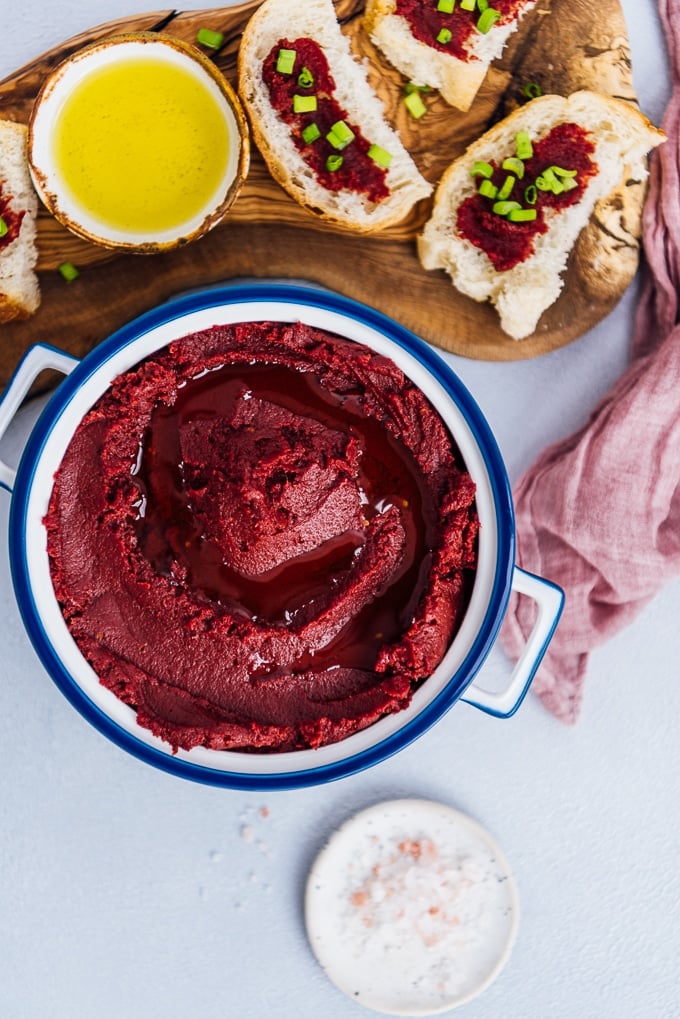
As A Breakfast or Snack Food: It might sound weird to you, but we love it as a Turkish breakfast food or party food too! Just spread a little of it on a piece of bread, drizzle a little olive oil on it and top with herbs.
In Sauces: Use it to make flavorful sauces for dishes like stuffed grape leaves dolma and imam bayildi recipe. It’s like an enchanting substance in a jar and once you open it, you want to add it into any dish you like.
How To Turn It To A Tomato Sauce
Making tomato sauce is super easy with tomato paste and it is way tastier than store-bought sauces.
First, whisk together ¼ cup tomato paste, olive oil and 1 cup water in a suace pan. Heat it over medium high heat and bring it to boil. Then, reduce the heat to medium low and season the sauce with spices (black pepper, dried thyme or mint), herbs (basil or parsley) and mashed garlic.
You can decide on which spices and herbs to use according to your taste. Use this flavor packed sauce in any dish you like. For example, cook Turkish meatballs kofte in this tomato sauce and turn them into a whole new meal.
FAQs
Meaty tomatoes like plum, roma or fresh salsa tomatoes are the best options. You can definitely use heirloom tomatoes too but they are juicier, so you will end up with less paste.
Use tomato puree as a substitute but you need to increase the amount. On the other hand, if tomato paste is a must in a recipe, you had better simmer tomato puree with a little salt in a sauce pan until it gets thicker.
Tomato paste is way thicker and has a denser flavor.
Well, it is not raw at all. And yes, you can eat it as it is. It is a great snack when you spread some on a piece of bread.
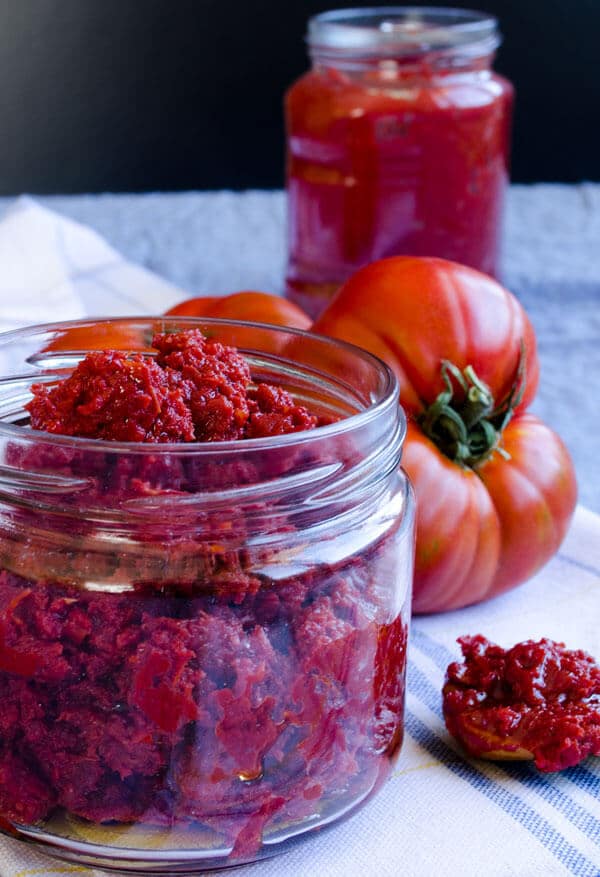
Recipes Using Tomato Recipes
Other Tomato Recipes
As always: If you make this recipe, let us know what you think by rating it and leaving a comment below. And post a pic on Instagram too—tag @give_recipe so we can see!
Sign up for the FREE GiveRecipe Newsletter to get the new recipes into your inbox! And stay in touch with us on Facebook, Pinterest, YouTube and Instagram for all the latest updates.
📖 Recipe

How To Make Tomato Paste
INGREDIENTS
- 5 kilo tomatoes
- 3 tablespoons kosher salt
- 4 tablespoons olive oil needed for storing
INSTRUCTIONS
- Cut the tomatoes into halves or quarters, removing the stems. Put them in a food processor. Puree them in batches and pour the puree into a large pot.
- Sprinkle salt over the tomato puree and heat it over medium high heat uncovered until the tomatoes release juice and start to boil. Keep boiling for about 30 minutes.
- Remove the foams you will see on the top when heating.
- Reduce the heat to medium low and let the puree simmer until it has a consistency, for about 40 minutes. Let it cool a bit.
- Put a strainer over a large bowl. Pour the tomato sauce into the strainer. Press down the sauce using a spoon until only the seeds and the skin remains in the strainer.
- Pour it back into the pot. Bring it to a boil and let it simmer over medium heat until thick, for 40-50 min. It will reduce almost by half.
- Pour the sauce in one or two baking sheets in a thin layer. Wait it under the sun for 3-4 days depending on the temperature, until it gets really thick.
- After this duration, you can put the tomato paste into jars.
- Transfer the paste into clean jars using a spoon, pressing it down well each time you put a spoon. Flatten the surface and pour olive oil on it. Tighten the lid of jar. Store it either in the refrigerator or in your pantry, away from sunlight.
Video
NOTES
NUTRITION
Nutrition information is automatically calculated, so should only be used as an approximation.


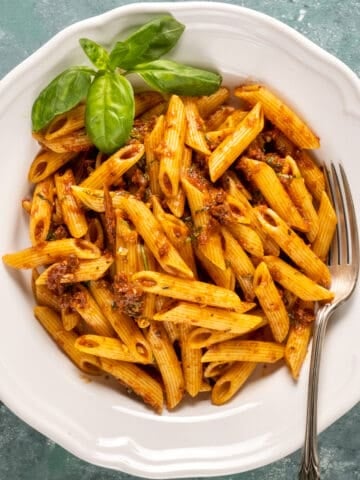
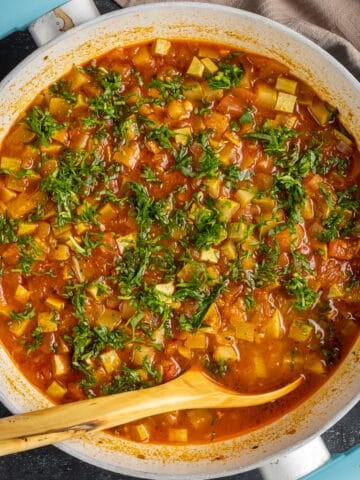

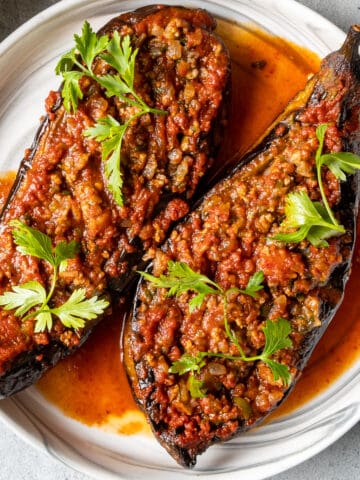
Heidi says
Fantastic! I live in Australia and it’s our summer here. We have a glut of home grown tomatoes so I was able to get rid of 5kg in one sitting. Our temps range from 30-40 degrees right now, so perfect for this recipe. Thank you for posting!
Zerrin & Yusuf says
Hi Heidi,
You are most welcome! Tomato paste making is one of our summer routines. Homegrown summer tomatoes are the best for this recipe! Enjoy!
Diane says
Can this be put in ice cube trays to freeze?
Zerrin & Yusuf says
Yes, you can store them in ice cube trays.
Mercy says
Hi!
Is it okay to add pepper and onion to the tomatoes be fore processing?
Zerrin & Yusuf says
Hi Mercy,
Well, we never do it. Tomato paste is a staple in Turkey and it contains only tomatoes and salt. So never thought of adding other ingredients into it. Not sure if they spoil the taste and the texture of tomato paste. It is not a tomato sauce anyway.
Hannah says
How long will it keep for?
Yusuf says
It keeps for up to a year or longer as long as you store them in the right way. Please read the notes on "How To Store" section in the post. They might be helpful.
Rachel says
Hello! I am very interested in the process of drying the paste in the sun. How do you keep the bugs off? Thank you so much for sharing this recipe!
Yusuf says
Hi Rachel,
Thanks for asking this. We cover it with a large cheese cloth. Let us know how it turns out!
Sophie says
Thank you for the recipe
Brenda Lux says
Thank you for having a sun-dried recipe. Brenda in Florida, USA
Mathew says
Love idea of drying it under the sun! It is much easier as you don't have to watch it closely. Also I love the flavor more. Thanks for the recipe!
Yusuf says
Hi Mathew! We love everything sun-dried! Even sun-dried fruit and vegetables have a much better flavor than fresh ones.
kate Snave says
I cook it as long as I can and then spread it on a lightly oiled sheet tray and bake it in the oven at 170 degrees. This will gently evaporate the moisture. Very similar making fruit leather.
Zerrin says
Hi Kate, sounds like a good alternative to drying under sun. Thanks for sharing it here.
Diane says
Hello, The water from the tomato s you can use for your bone broth!
Zerrin says
Hi Diane, we don't waste the tomato juice indeed. We dry it under sun so that it turns into thick tomato paste.
Nihal says
Oooo. Bu tarif çok iyi oldu. Öyle kolay anlatmışsın ki 🙂 Burada (Tanzanya) domates bolluğu var.Gerçi cam kavanoz bulabilmeyi başaramadım hala ama bulunca ilk iş bu tarif olacak. Cam kavanozlara koyunca konserve işlemi gerekiyor mu? Yoksa bu tarif buzdolabında saklamak için mi?
Zerrin says
Konserve işlemine gerek yok. Güneşte iyice kuruduğundan emin olun veya pişiriyorsanız suyunu çektiğinden emin olun. Kavanozlara doldurunca da en üst yüzeye birazcık zeytinyağ gezdirirseniz havayla teması önlemiş olursunuz. Buzdolabına koymanız gerekmez.